7 Easy Plant Care Tips for Your Indoor Plants
Do you have trouble keeping plants alive? Follow these simple plant care tips to keep your indoor plants healthy and thriving all year long!
Hey there friends! Are you looking for a way to spruce up your home with some color and life? If so, indoor plants are a perfect choice! Indoor plants can brighten any room and help to purify the air. But taking care of them requires a little know-how. In today’s blog post, I’m going to share with you 7 essential tips that will make sure that your precious potted pals stay happy and healthy! With my help, you’ll be able to give your home an eco-friendly refresh – all while learning how to take good care of beautiful living things. Let’s get started!
How to Keep Your Plants Happy
How do you make your plants happy? I’ve heard many times from friends, how do you keep your plants alive? What tips do you have? How do you keep them looking so healthy? Well, it’s not as hard as you might think. Like most things, giving attention to your plants is key. Here are my 7 tips to care for your indoor plants.
First, and foremost, I must admit my history of growing plants, or anything green comes from a long line of family history.
Generations of Gardening and Plant Care
As far back as I can remember, my dad and both of my grandfathers had one of the largest vegetable gardens you have ever seen. I have the best memories of heading outside as a young girl and joining them in the garden on a hot summer day, while they tended to their flowers and plants! It’s where my love of gardening first began.
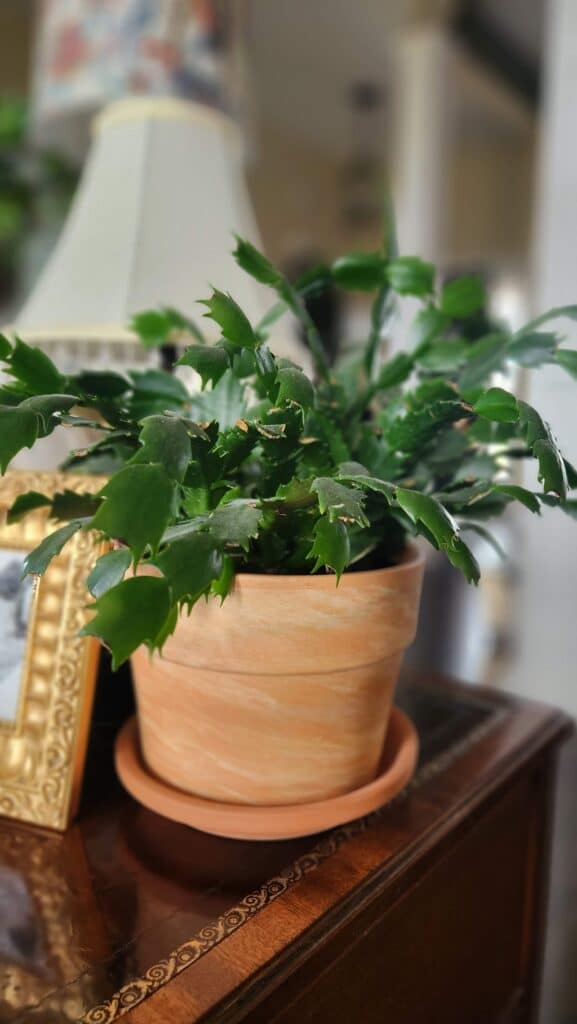
Here are 7 easy tips for indoor plant care
Secondly, I’ve determined that having plants indoors is good for our souls. Besides bringing nature indoors, plants can be soothing to have in your home. Plants can be great for your air quality and overall good for your mental health, and energy and make you feel more relaxed and less stressed.
1. Give them enough light.
One of the most important things you can do for your indoor plants is to give them enough light. Most plants need at least six hours of sunlight per day, so if you don’t have a lot of natural light in your home, you may need to supplement with artificial lighting.
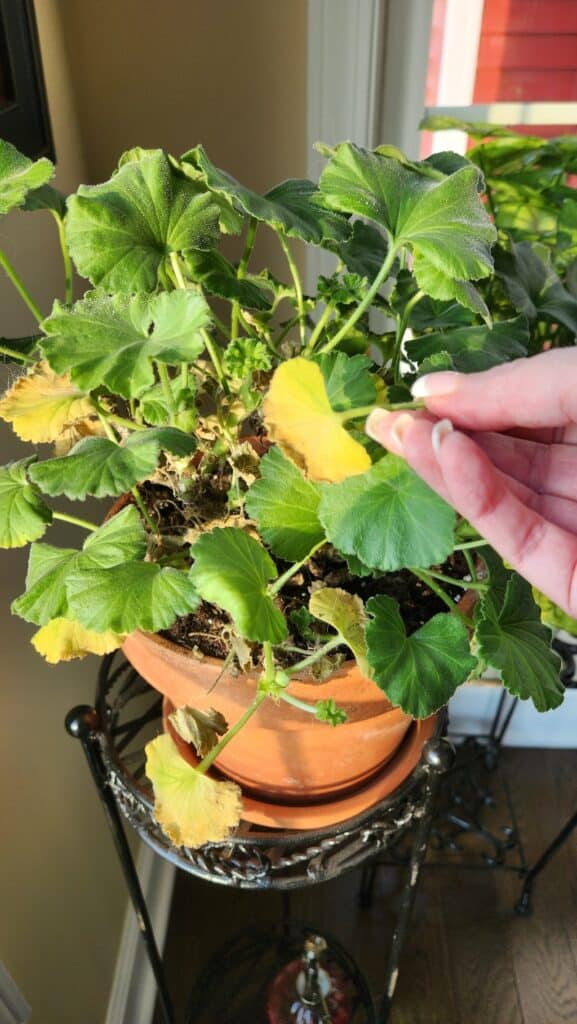
How Often Do You Water a Plant?
2. Water them regularly.
Another important thing to remember is to water your plants regularly. With my indoor plants, I generally water them about once a week, but this will vary depending on the type of plant and the amount of light it’s getting. Be sure to check the soil before watering to make sure it’s not already moist. (I find checking the soil is key and lets you know if they are too dry and need a sip or two)
3. fertilize them occasionally.
Feed, feed, feed! I’ll let you in on an indoor plant care secret. Fertilizing your indoor plants every few months will help them stay healthy and thrive. Look for a fertilizer that’s specifically designed for indoor plants, and follow the directions on the package for the best results. This is my go-to fertilizer.




4. Prune them as needed.
Pruning your indoor plants will help them stay bushy and full. Use sharp, clean shears to remove any dead or dying leaves or stems, and don’t be afraid to cut back any overgrown areas.
Cutting back my plants and keeping them trimmed is key for me. Often I take the ‘shoots’, and place them in a mason jar. When the roots propagate, I replant them in a new pot and share them with friends.
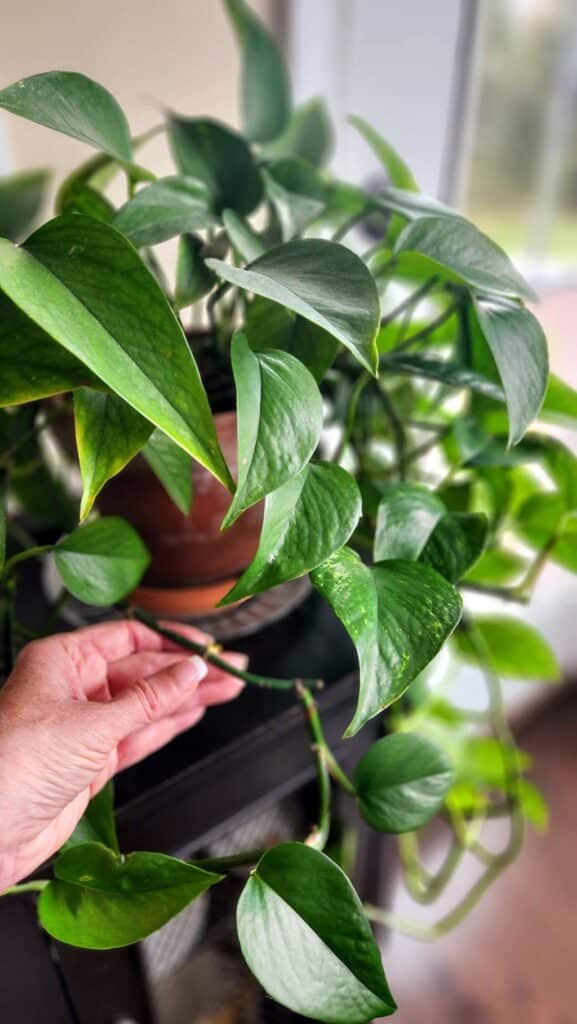
When Do I Repot my Plant?
5. Repot them as needed.
As your plants grow, they may need to be repotted into larger pots. This is especially true for fast-growing plants like vines and ivies. When repotting, be sure to use a pot that’s only slightly larger than the one the plant is currently in, as too much extra space can lead to root rot.
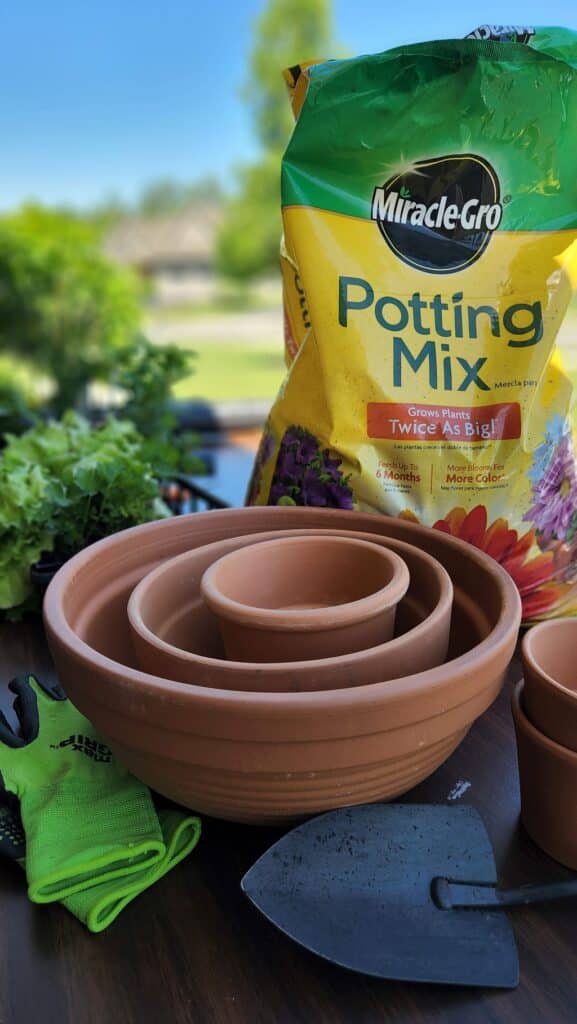
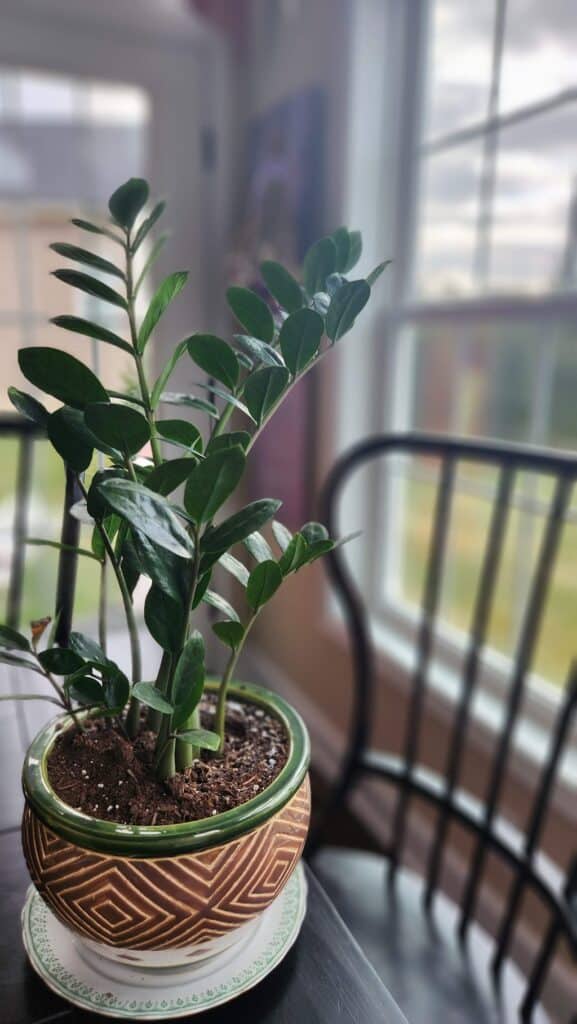




6. Keep an eye out for pests.
Indoor plants can sometimes be susceptible to pests like aphids and spider mites. If you notice any pests on your plants, be sure to treat them immediately with an insecticide designed for indoor use. (I’ve not had this happen, but it’s best to keep and eye out for any issues early)




7. Enjoy them!
Last but not least, don’t forget to enjoy your indoor plants! They can brighten up any room in your home and make great conversation starters.
Have you checked out my other social channels? Follow along so you don’t miss out on any of my tips, recipes, or stories! Join me on my other social channels for more! Pinterest, Instagram, and Facebook.
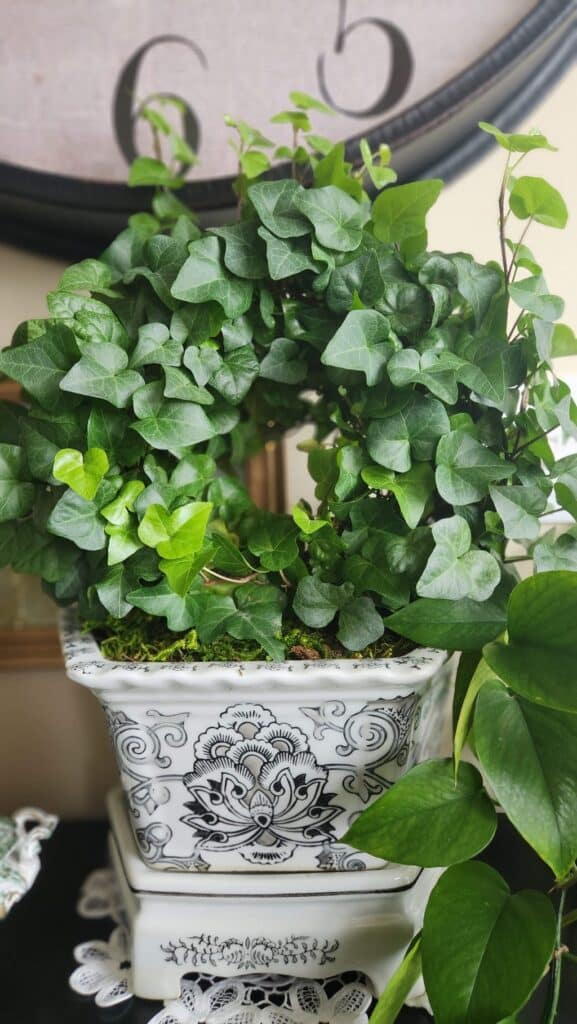
Pin It To Remember It:
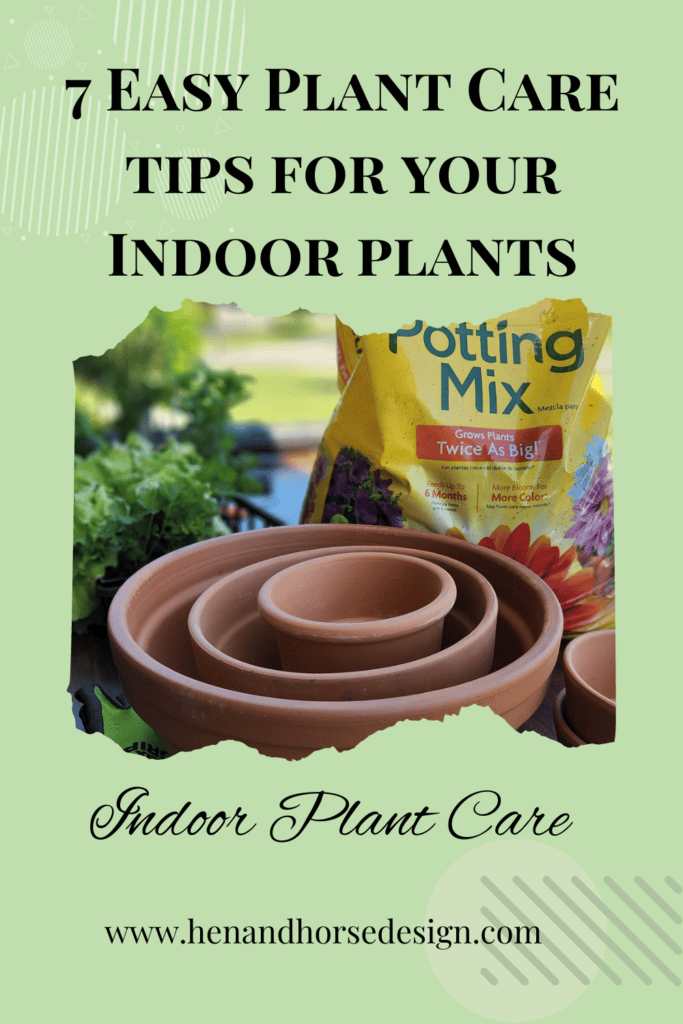




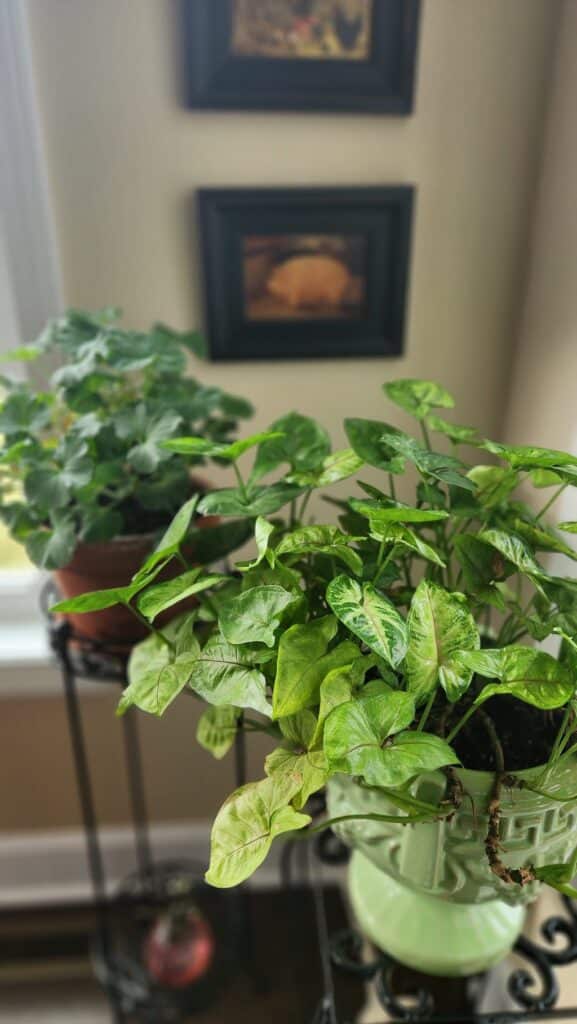
Indoor plants can be perfect additions to any home! It’s so rewarding to see them thrive. Not only do they bring color and life, but the benefits of having a little greenery around can boost your mood. By following my 7 simple tips for indoor plant care, you’ll ensure your green babies stay happy and healthy. Do you have any indoor plants? Which one is your favorite?

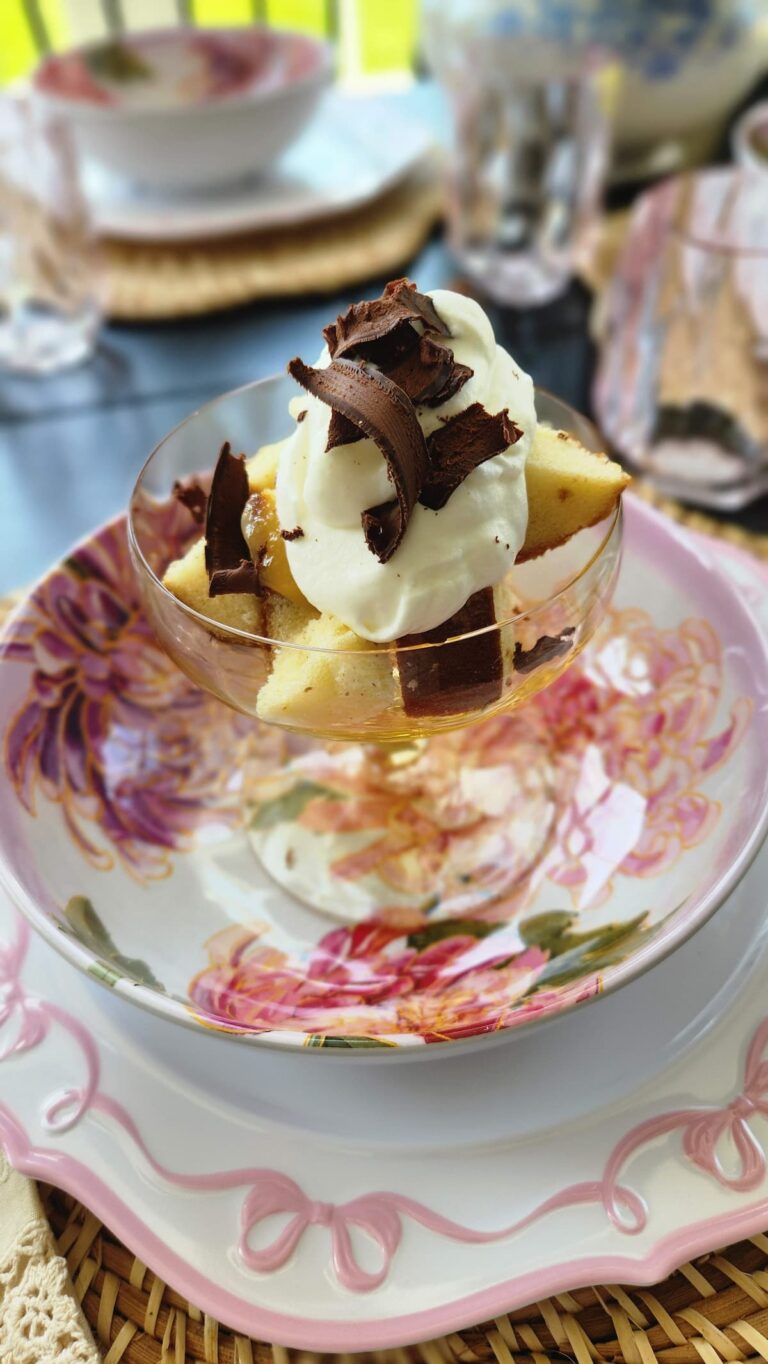
Easy Lemon Curd Parfait with Shaved Chocolate
Hi friends, as the days grow longer and the garden begins to show signs of growth, I find myself reaching for recipes that feel as fresh and bright as spring itself. One of my absolute favorites this time of year? A simple yet elegant, easy lemon curd parfait with shaved chocolate and layered with whipped cream….
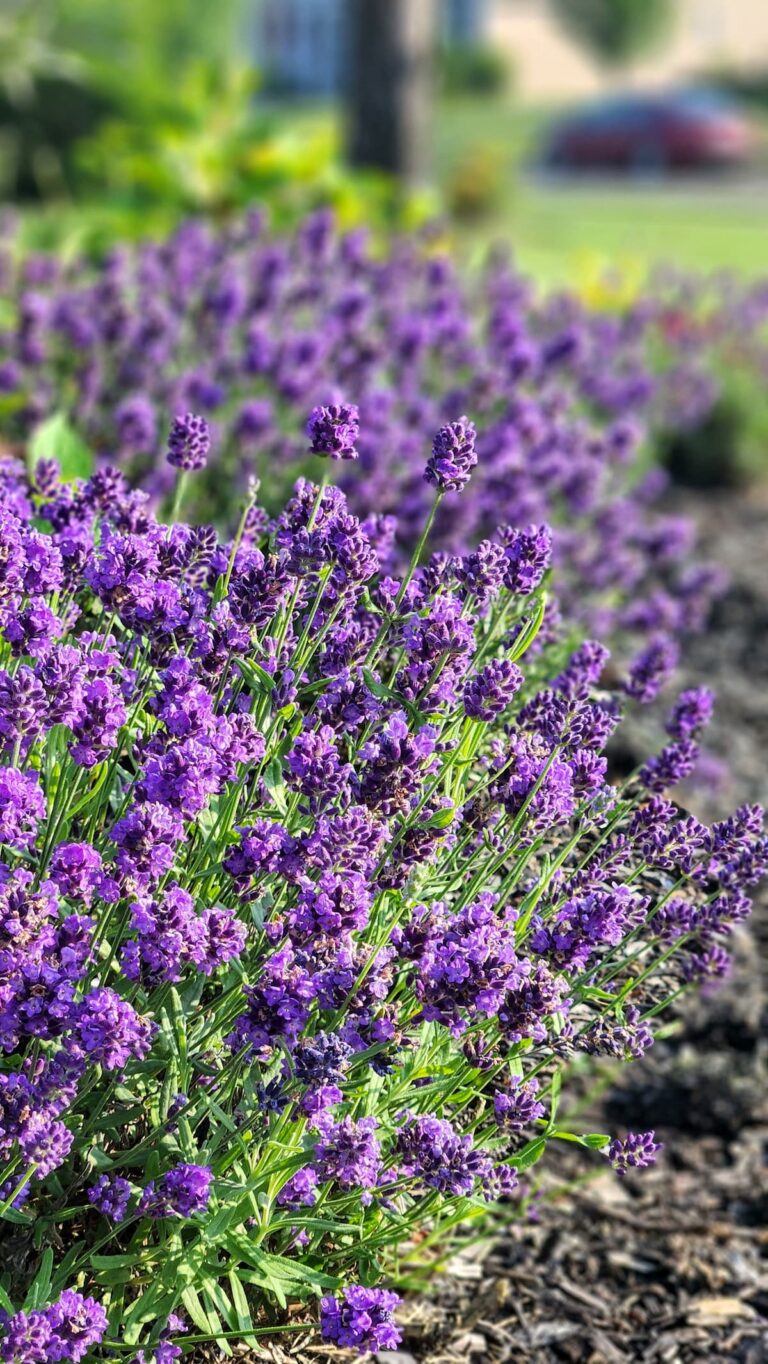
Which Plants Don’t Like Tea Leaves? Avoid These Garden Mistakes
If you’ve ever enjoyed a cup of tea and wondered whether your garden plants would appreciate the leftover tea, you are not alone. Many gardeners use tea leaves as a natural fertilizer, believing they provide essential nutrients to promote healthy growth. I happen to be one of them. However, how do you know which plants don’t like tea leaves? Not all plants benefit from this practice—some…
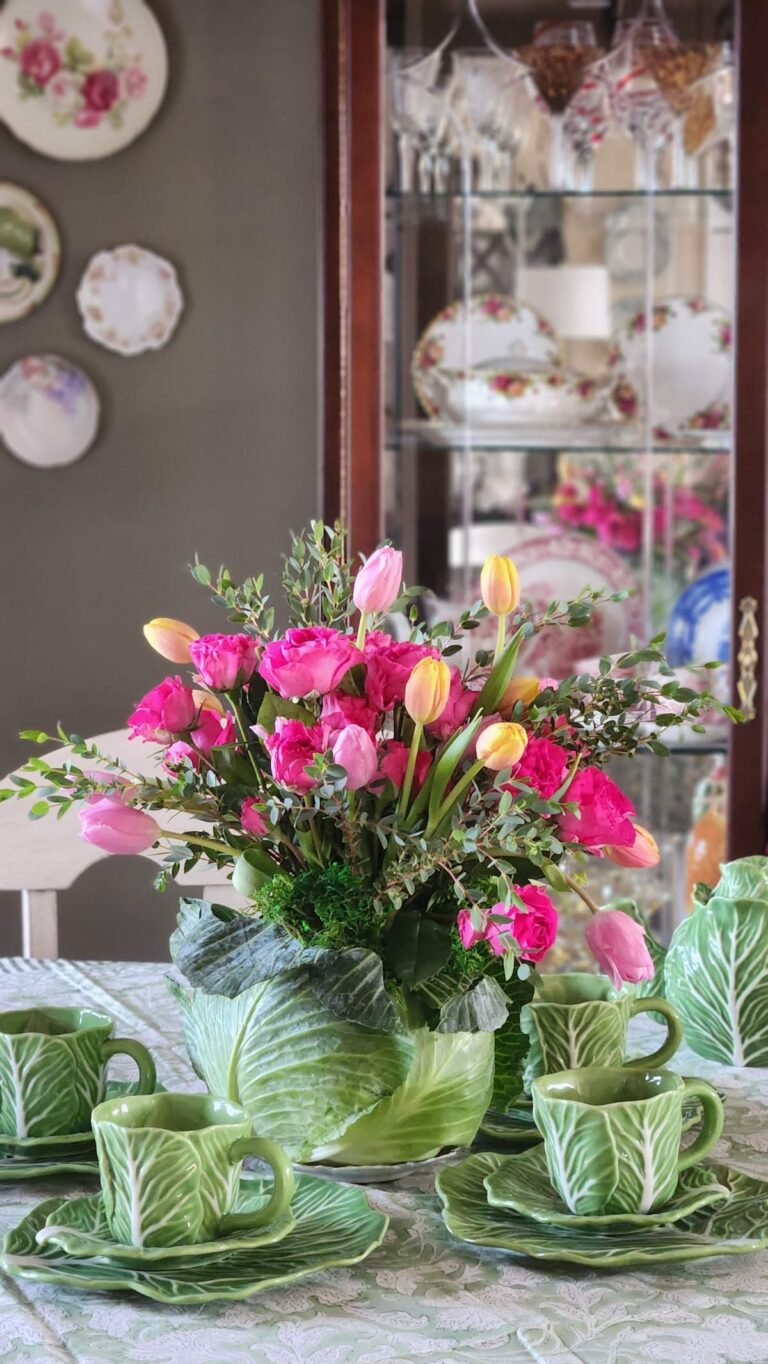
How to Make a Simple Cabbage Arrangement in 3 Steps
Creating a spring flower arrangement in a hollowed cabbage is an easy and charming way to add a natural touch to your home decor. Whether you’re decorating for an Easter tablescape, a gift basket, or just want a beautiful flower vase for your spring table, this diy How to Make a Simple Cabbage Arrangement in 3 Steps cabbage vase is the perfect solution. Using fresh tulips, pink roses, and…
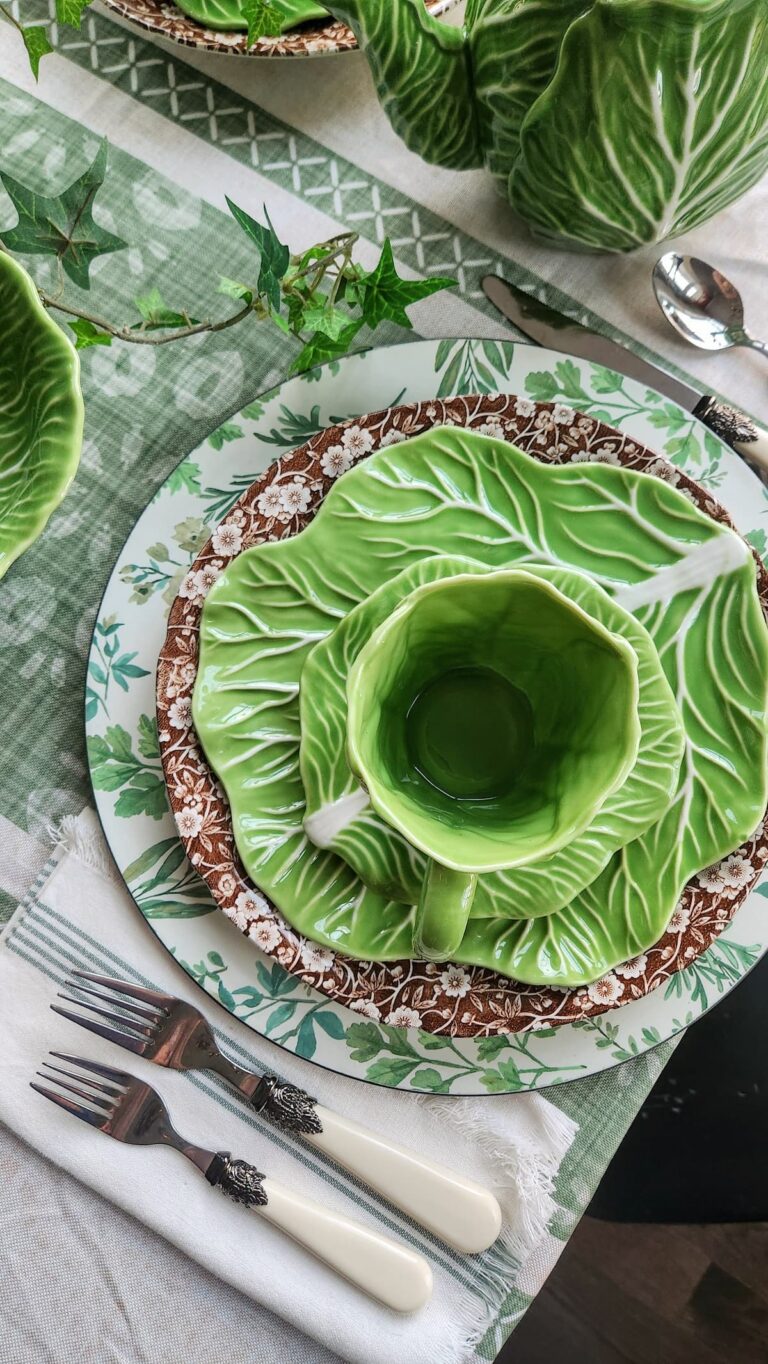
Easy and Elegant St. Patricks Day Tablescape
How to Style an Easy and Elegant St. Patricks Day Tablescape with Green Cabbageware Creating a beautifully curated table setting is one of my favorite ways to bring warmth and charm into my home. At Hen and Horse Design, we blend vintage treasures with new finds to craft inviting and timeless spaces. Today, I’m sharing how…
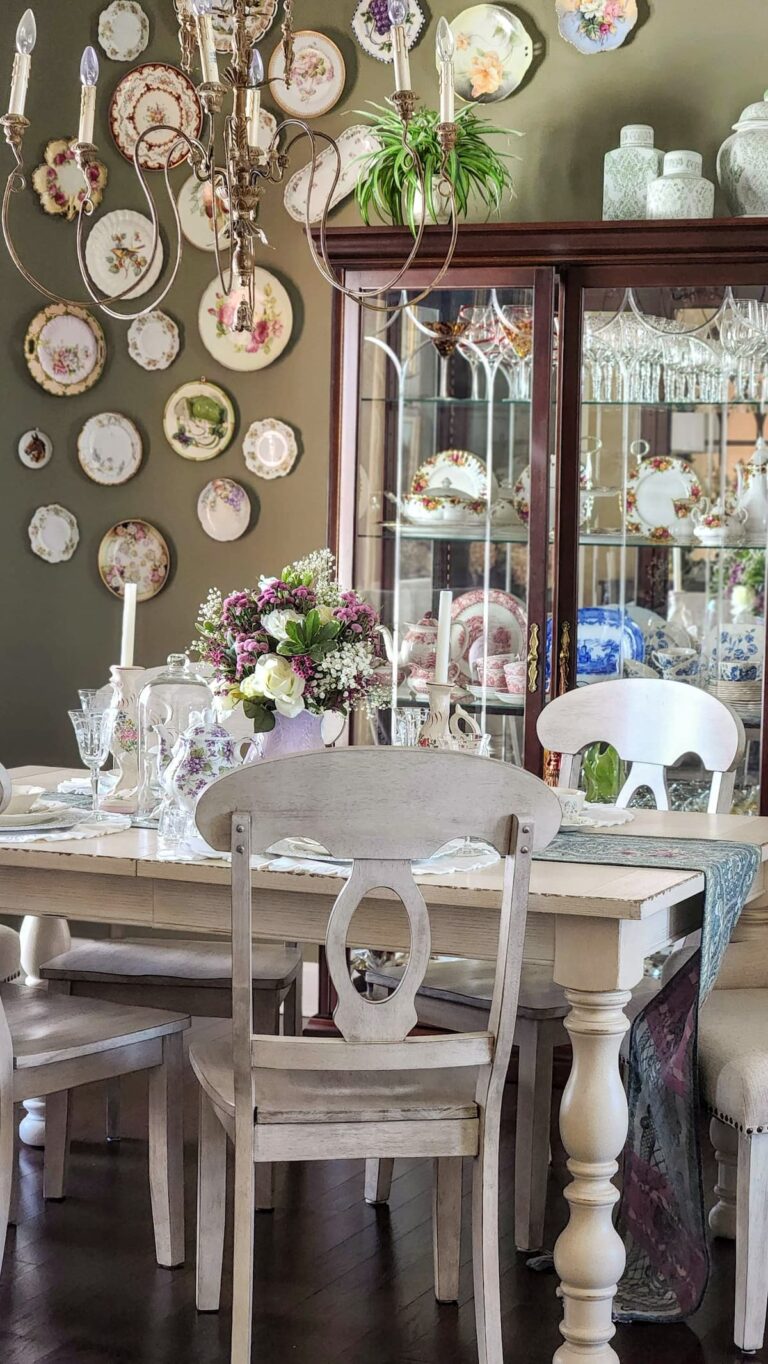
Simple Lavender and Green Inspired Tablescape
Creating a beautiful dining table and tablescape doesn’t have to be complicated or expensive. With a mix of sentimental pieces, a budget-friendly floral centerpiece, and a touch of vintage charm, you can set a stunning table perfect for spring. Today, I’m sharing how I styled my simple lavender and green inspired tablescape, incorporating my mother’s…
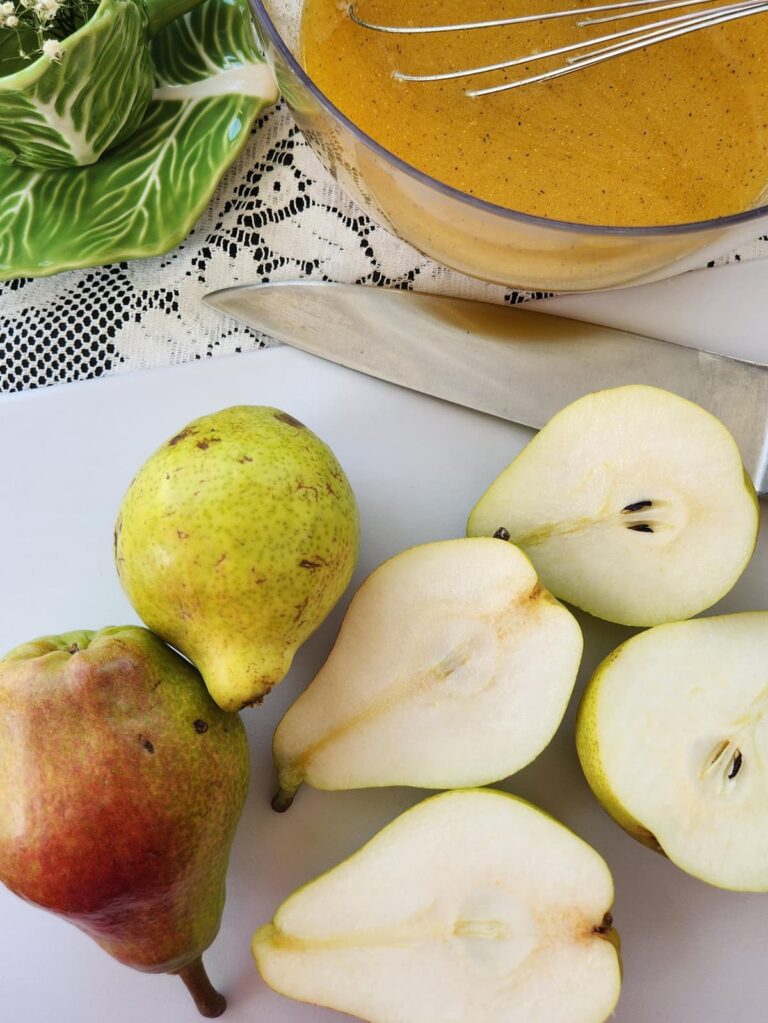
Best Braised Chicken with Pears Recipe
A Succulent Chicken Dinner with Sweet Pears – A Family Favorite There’s nothing quite like a delicious one-pot meal that comes out perfectly succulent and juicy every single time. This roast chicken dish has been a staple in my family for years, and every time I make it, I’m reminded of the comforting flavors that make it a must-try list favorite. With easy ingredients and a simple…


So many beautiful plants you have in the house Susan. You would think I would have more then I do. I tend to forget to water the ones in the house.